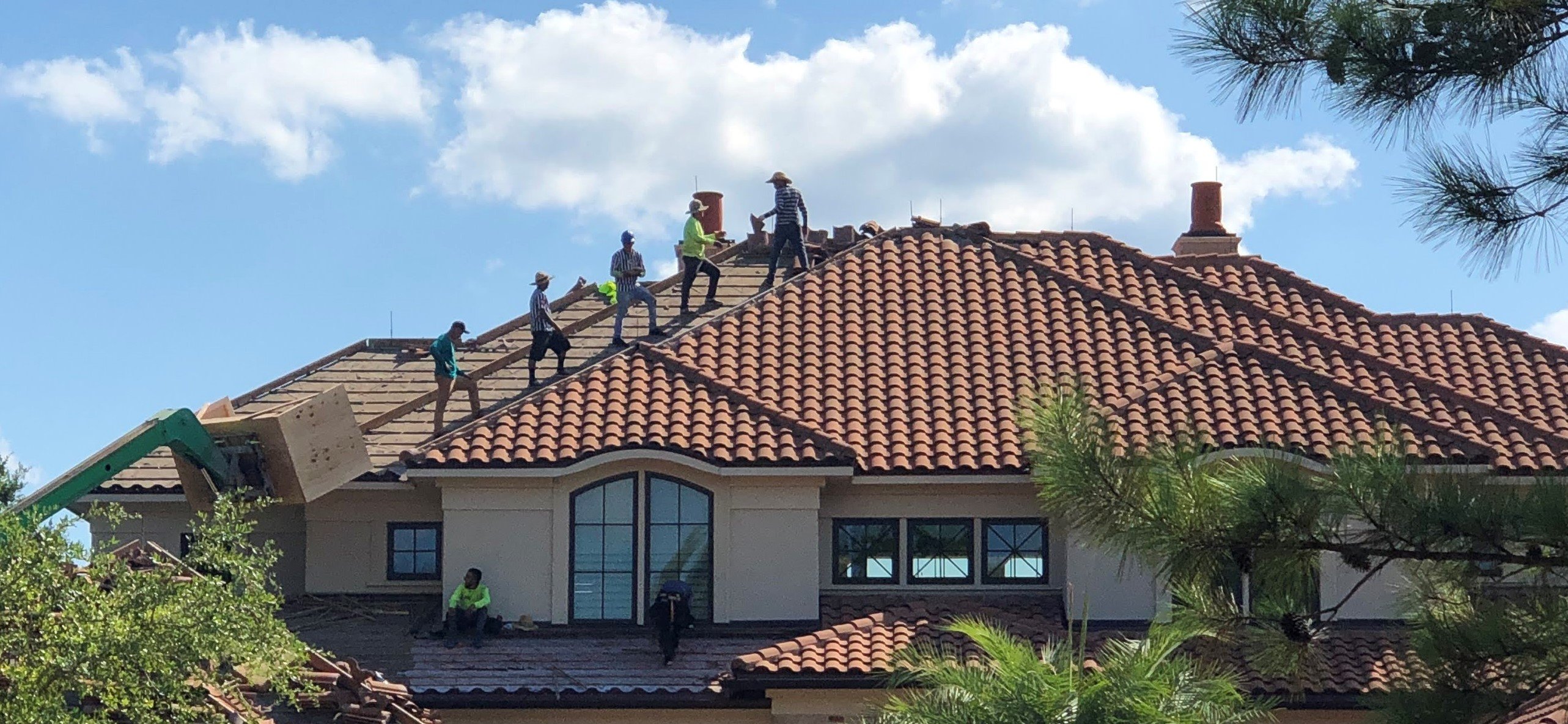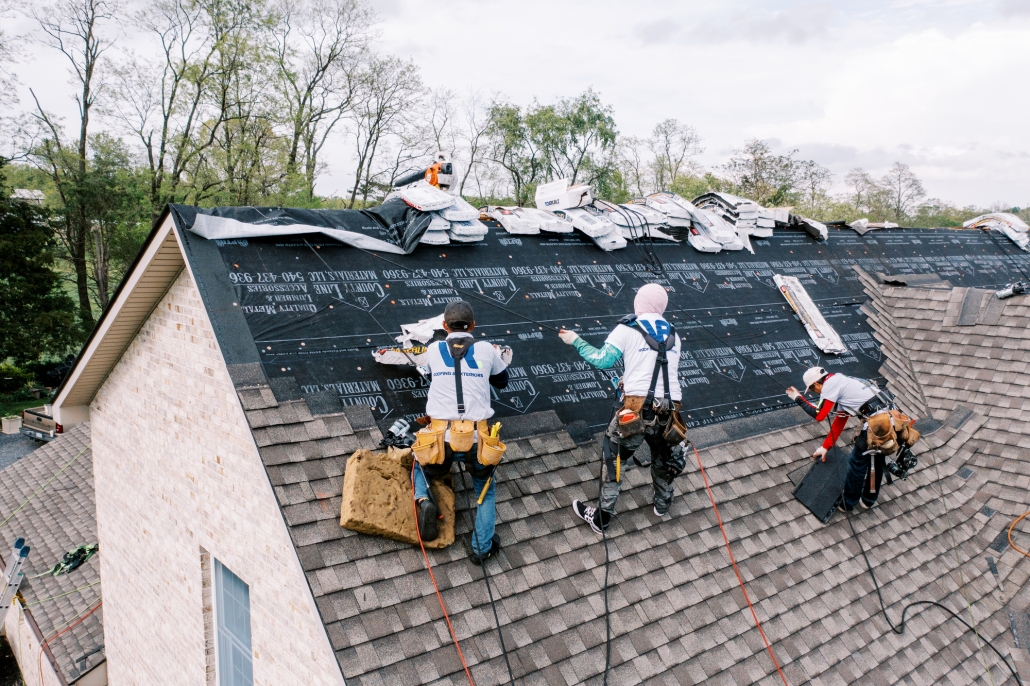The Benefits of Dealing With Gainesville FL Roofing Companies
The Benefits of Dealing With Gainesville FL Roofing Companies
Blog Article
Best Practices for Ensuring Correct Roof Covering Ventilation
A balanced consumption and exhaust air vent ratio, typically 1:300, plays an essential duty, with consumption vents ideally put at the lower edge of the roof for amazing air entrance and exhaust vents at the height for cozy air leave. Keeping insulation away from vents is vital to protect against airflow restriction.
Understand Ventilation Basics
Properly recognizing air flow essentials is important for guaranteeing the long life and effectiveness of roof systems. Effective air flow mitigates wetness accumulation and temperature extremes in the attic, both of which can result in considerable architectural damage with time. A well-ventilated roof covering helps in preventing usual concerns such as mold and mildew development, wood rot, and ice dams, which can endanger the integrity of the roofing products and the underlying structures.
The main goal of air flow is to facilitate the activity of air, enabling a consistent exchange between the exterior and interior settings. This equilibrium is attained via a combination of consumption and exhaust vents that collaborate to keep ideal air movement. Intake vents, normally located along the soffits or eaves, permit fresh air to go into the attic room, while exhaust vents, commonly positioned at or near the roof ridge, enable warm, damp air to get away.
Key aspects affecting the performance of roofing system air flow include correct placement, sufficient sizing, and making sure that both consumption and exhaust vents are unobstructed. Regular evaluation and maintenance are important to recognize possible obstructions, damage, or ineffectiveness in the air flow system, consequently safeguarding the roof covering's efficiency and longevity.
Kinds Of Roofing Vents
Roofing system vents play a crucial role in keeping efficient attic room air flow and, by extension, the total health of the roof. Numerous kinds of roof covering vents are readily available, each with one-of-a-kind benefits customized to particular roof needs. Ridge vents, as an example, are installed along the roofing's peak, allowing cozy, moist air to leave from the attic room. They supply constant ventilation and mix effortlessly with the roofline, making them both effective and visually pleasing.

Soffit vents are set up under the eaves and operate in tandem with roofing system vents to ensure a balanced intake and exhaust system. By allowing cooler air to get in from below, soffit vents promote the expulsion of warm air via top vents. Gable vents, situated on the exterior wall surfaces of the attic, offer an additional efficient option, particularly in homes with saddleback roofs.
Evaluate Your Present Ventilation

Following, think about the age and problem of your roofing materials and ventilation parts. Older systems may not follow present building ordinance or may have worn away in Discover More time, lowering their efficiency. Conduct a thorough exam to determine any kind of indications of damage, such as rust, damage, or spaces that can jeopardize the system's performance.
Furthermore, determine the attic temperature and humidity degrees. High temperatures and moisture can suggest insufficient air flow.
Installation Best Practices
Reliable installment of roof ventilation systems is extremely important for making sure optimum efficiency and longevity. Proper installment begins with understanding the particular ventilation demands of the roof and the building it covers. This involves determining the appropriate ratio of intake to wear down vents, usually adhering to the 1:300 regulation, which states one square foot of ventilation for every 300 square feet of attic room floor room.

Consumption vents should be set up at the roof covering's reduced side, commonly in the soffits, to enable cool air to get in. Exhaust vents, on the other hand, need to be mounted near or at the roof covering's optimal to assist in the departure of cozy, damp air.
Seal all vent links diligently to stop air leakages and possible water seepage. Usage high-grade materials and comply with manufacturer guidelines to ensure sturdiness and effectiveness. Additionally, integrating ridge vents with baffles can substantially enhance air flow performance by preventing wind-driven rainfall and snow from getting in the attic room.
Inevitably, precise installment of roof ventilation systems reduces prospective concerns such as mold development, ice dams, and architectural damages, guaranteeing the roof's integrity and the building's total health.
Normal Upkeep Tips
Consistency in upkeep techniques is basic to guaranteeing the long-lasting efficiency of roof covering air flow systems. Normal examinations are critical, ideally done biannually-- in the springtime and loss. Throughout these examinations, make sure that vents are free of debris, nests, and other obstructions that could impede air flow. Look for any indicators of wetness accumulation or mold, as these can suggest incorrect ventilation or leakages (roofing companies gainesville florida).
Cleaning up the vents is an additional crucial task. Make use of a soft brush or a vacuum cleaner to eliminate dust and debris from intake and exhaust vents. Beware not to harm the air vent screens or louvers during the process. Additionally, examine the attic room space for any indications of water damage, which could jeopardize the honesty of the roof.
Correct insulation is equally crucial. Ensure that attic room insulation does not obstruct the try this web-site vents, as this can seriously restrict air flow. If any insulation has actually changed or cleared up, rearrange or replace it to keep an effective barrier.
Lastly, change any kind of damaged or missing elements without delay. Busted vents, fractured shingles, or tatty blinking can all add to insufficient ventilation and ought to be addressed without hold-up. Normal maintenance ensures that the roof covering ventilation system operates optimally, thereby prolonging the life expectancy of the roof itself.
Final Thought
Ensuring appropriate roofing ventilation is critical for preserving the effectiveness and durability of a roof. Adherence to the 1:300 consumption and exhaust vent ratio, coupled with the critical placement of vents, is essential. Normal biannual examinations, particles cleansing, and making sure insulation does not obstruct airflow are vital methods. Executing these best methods will certainly cultivate a well-ventilated roof, thereby reducing potential problems connected to moisture buildup and too much heat, ultimately prolonging the roof's life site link expectancy.
A well balanced intake and exhaust vent proportion, generally 1:300, plays a crucial duty, with consumption vents ideally positioned at the reduced side of the roofing for cool air entry and exhaust vents at the height for cozy air departure. Intake vents, usually situated along the eaves or soffits, enable fresh air to go into the attic space, while exhaust vents, often situated at or near the roof ridge, make it possible for warm, moist air to escape.
Soffit vents are installed under the eaves and work in tandem with roof covering vents to ensure a balanced consumption and exhaust system. By permitting cooler air to enter from below, soffit vents help with the expulsion of hot air via upper vents. Adherence to the 1:300 consumption and exhaust air vent proportion, coupled with the calculated positioning of vents, is necessary.
Report this page